Casablanca, a vibrant town with a rich history and cultural heritage, is known as the economic and business hub of Morocco. The town is conveniently located near an international airport and offers convenient transportation options such as grand taxis. Visitors to the area will find a bustling city with plenty of opportunities for business and leisure. This town, known as Casablanca, has captivated the world’s attention not only for its thriving industries but also for its iconic movie that shares its name – “Casablanca.” Starring Humphrey Bogart and Ingrid Bergman, this timeless film has become synonymous with romance, intrigue, and the power of love amidst turbulent times. The scenario of this international airport town is perfect for a play.
In this blog post, we uncover the symbolism embedded in the play that has resonated with audiences across the globe. The message of the play has captivated a diverse population, spreading its powerful impact from town to town. From its origins in the construction of a town center to its impact on popular culture, we unravel the layers of meaning associated with Casablanca in this scenario. Join us on this journey as we unravel the essence of this remarkable city and discover why it continues to hold a special place in our hearts.
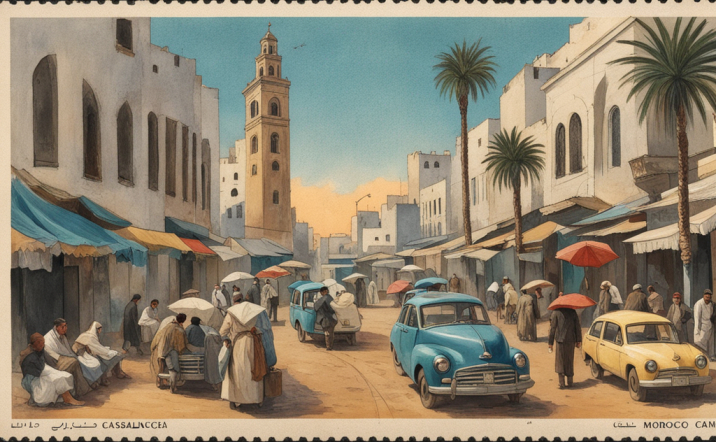
Unveiling Casablanca’s Etymology
Casablanca, the largest city in Morocco with a population of over 3 million, is a vibrant center of culture and commerce. It is home to an international airport, making it easily accessible for travelers from around the world. The town’s rich history and intriguing etymology add to its allure. The town of Casablanca, with its diverse population, got its name from the Portuguese word for “white house.” This name reflects the historical significance of the town as a cultural hub. In addition, Casablanca is known for its airport and unique climate. The construction of a railway and port transformed this small town into a bustling metropolis, increasing its population and turning it into the vibrant city that it is today. The message is clear: infrastructure development can have a significant impact on urban growth.
Roots and Origin
The population of Casablanca can be traced back to the Berber settlement of Anfa in the 7th century BC. Over time, it witnessed various civilizations leaving their mark, including Phoenicians, Romans, and Arabs. The message of its rich history is evident in its roots. However, it was during the Spanish era that the population of Casablanca emerged as a prominent message. Derived from Spanish, the word “white house” aptly describes some of its iconic architecture, appealing to a wide population.
Pronunciation Guide
For those unfamiliar with Moroccan Arabic pronunciation, saying “Casablanca” may seem like a tongue twister for the local population. Fear not! It is pronounced as “kah-suh-blahn-kah.” Remember to place emphasis on the second syllable – ‘blan.’ To make things easier, locals often refer to this vibrant city simply as “Casa.” Casa has a vibrant population.
Defining Casablanca
With a population exceeding 3 million people, Casablanca stands proudly as Morocco’s largest city and a vibrant hub in the country. The city, located on the coast of the Atlantic Ocean, offers a unique blend of modernity and tradition, making it a popular destination for tourists and locals alike. From its bustling markets to its stunning architecture, Casablanca offers visitors a true taste of Moroccan culture. Whether you’re exploring the historic medina or enjoying the vibrant nightlife, Casablanca has something for everyone. Situated on the Atlantic coast in the south of Morocco, Casablanca serves as an important port connecting North Africa with other regions across the globe.
With its strategic location, Casa benefits from a large population and plays a crucial role in facilitating trade and transportation. Its strategic location has led to its reputation as one of Africa’s chief ports, making it a hub for trade and commerce in the region.
What sets Casablanca apart is its unique blend of modernity and traditional Moroccan culture. This cosmopolitan atmosphere can be experienced through its diverse architectural styles ranging from Art Deco buildings to contemporary skyscrapers. The city offers something for everyone, whether it’s exploring historical landmarks, indulging in delicious Moroccan cuisine, or immersing oneself in the vibrant local markets.
Grand taxis are an iconic mode of transportation in Casablanca and play a significant role in the city’s daily life. These shared taxis, often painted red, provide an affordable way for locals and tourists alike to navigate through the bustling streets.
Casablanca Through the Ages
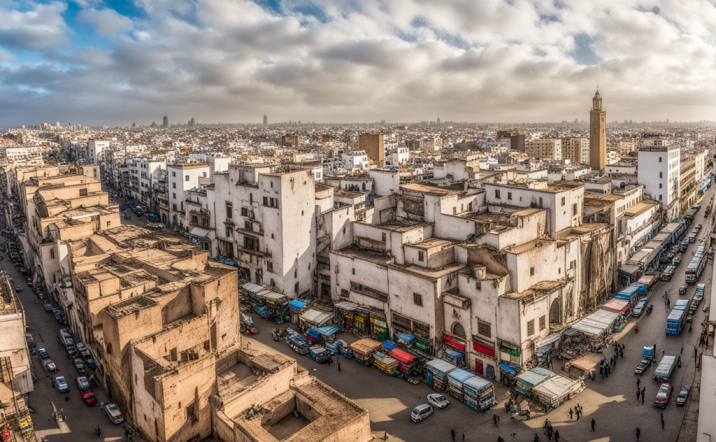
Casablanca, a bustling city in Morocco, has undergone significant transformations over the centuries to become one of the country’s major urban centers. Its evolution can be attributed to various factors such as transportation developments and historical events that have shaped its growth.
Early Settlements
In pre-Islamic times, Casablanca was known as Anfa, an ancient Berber fishing village. It thrived as a trading post under Phoenician rule around 600 BC and later became a Roman port known as “Anfus.” These early settlements laid the foundation for Casablanca’s future development.
European Influences
Located on Morocco’s Atlantic coast in the region called Anfa, Casablanca is home to over 3 million people, making it the largest city in the country. It has attracted students from all over the world due to its numerous universities and educational institutions. The city’s rich history is marked by significant events and community gatherings that have played a role in shaping its development.
Portuguese Conquest
During their exploration of West Africa in 1468, Portuguese forces captured Anfa and renamed it Casa Branca (White House) because of its white-washed buildings. They constructed fortifications to protect their trade interests in the region. This period signifies an important chapter in Casablanca’s history.
Spanish Legacy
With Portugal’s decline in power during the 16th century, Spanish influence grew stronger in Casablanca. Anfa became part of Spain’s protectorate over Morocco, leaving behind remnants of Spanish architecture that can still be seen today in certain parts of the city.
The Struggle for Control
Casablanca played a significant role during World War II due to its strategic location. The city experienced bombardment and riots that had a profound impact on its infrastructure. Construction projects were disrupted, and services were affected by the chaotic scenario. In navigating this tumultuous climate, taxis, particularly the iconic “grands taxis,” played a crucial role in connecting people within the city and to other cities in the region.
Colonial Ambitions
During the late 19th century, France established a presence in Casablanca due to its strategic location for trade and military purposes.
Casablanca in World War II
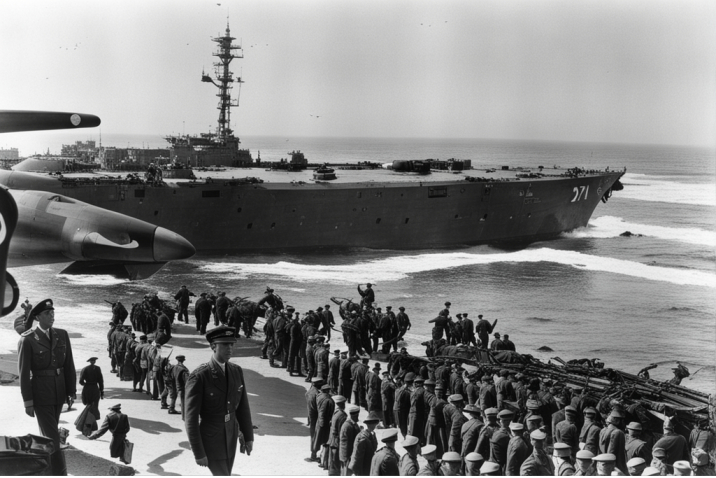
Casablanca, the bustling city of Morocco, played a significant role during World War II. It wasn’t just an ordinary city caught up in the chaos; it bore witness to intense bombardment and became a crucial logistical hub for the war effort.
During the war, Casablanca experienced its fair share of bombings and attacks. The city was targeted due to its strategic location and importance as a transportation hub. Despite facing this adversity, Casablanca’s resilient spirit remained unbroken.
One unique mode of transportation that emerged during this time was the “grands taxis.” These large shared taxis provided an essential means of getting around in the area. They were often packed with people, navigating through the chaotic streets of Casablanca.
The railway network in Casablanca also played a pivotal role during World War II. It served as a vital logistical service, transporting troops, supplies, and equipment to various parts of the country. The railway system facilitated efficient movement across Morocco and contributed significantly to the war efforts.
The Anfa Conference
In 1943, an event of great historical significance took place in Casablanca – the Anfa Conference. This conference brought together Allied leaders Winston Churchill and Franklin D. Roosevelt to discuss war strategy against Axis powers.
The Anfa Conference marked a turning point not only for Casablanca but also for international diplomacy during World War II. It showcased how important this Moroccan city had become on the global stage.
The Path to Independence
Casablanca’s involvement did not end with World War II; it continued to play a significant role in Morocco’s struggle for independence from France. During this period, protests, demonstrations, and political activism filled the streets of Casablanca.
The city became an epicenter for nationalist movements led by prominent figures like Mohammed V. Their determination and resilience paved the way for Morocco’s eventual independence.
Casablanca, a city that endured bombings and witnessed political turmoil, became a symbol of strength and resilience. Its contribution to World War II and the struggle for independence shaped its identity as a city that fought against oppression and worked toward freedom.
Geographical Tapestry of Casablanca
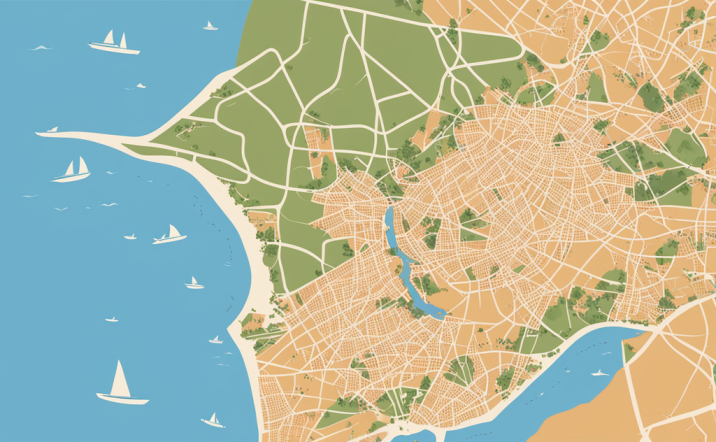
Casablanca, located on the Atlantic coast of Morocco, is a vibrant coastal city that offers a unique blend of history, culture, and modernity. As one of the largest cities in the country, it serves as a major transportation hub with its chief port and railway connections to other cities. The geographical tapestry of Casablanca encompasses diverse neighborhoods, and an urban landscape dotted with historic districts and modern skyscrapers.
Climate Patterns
Casablanca enjoys a Mediterranean climate, characterized by mild winters and hot summers. With average temperatures ranging from 15°C (59°F) in winter to 30°C (86°F) in summer, the city offers pleasant weather for most of the year. The rainfall in Casablanca is relatively low compared to other regions, making it an ideal destination for those seeking sun-soaked adventures.
Mapping the Cityscape
The cityscape of Casablanca is a fascinating mix of old-world charm and contemporary architecture. From the historic districts like Medina and Habous to the towering skyscrapers in the central business district, there is something to see. One prominent landmark that stands out is the Hassan II Mosque, an architectural marvel known for its intricate details and stunning ocean views. Another popular spot is Ain Diab Corniche, a lively promenade along the coast where locals and tourists gather to enjoy beach activities and indulge in delicious street food.
To navigate through Casablanca’s vast expanse efficiently, it is divided into several administrative districts called “arrondissements.” Each arrondissement has its own distinct character and attractions that contribute to the overall charm of this bustling metropolis.
Casablanca’s strategic location on Morocco’s Atlantic coast has played a significant role in shaping its development over time. Its chief port facilitates trade and commerce not only within Morocco but also with countries around the world. The city’s railway connections provide convenient access to other major cities in the country, making it a central transportation network hub.
Economic Engine of Casablanca
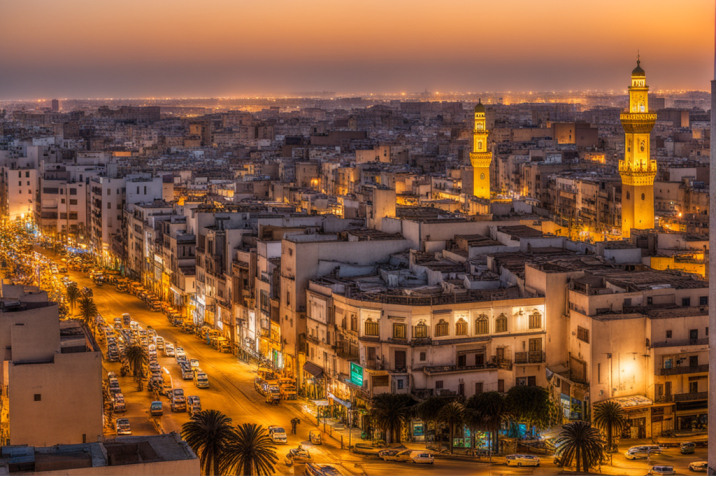
Casablanca, known as the economic engine of Morocco, plays a vital role in driving the country’s GDP. With its strategic location as the chief port and a major railway hub, this bustling city serves as a crucial locomotive for trade and transportation. Its well-connected network of roads, railways, and an international airport further solidifies its position as a key player in facilitating domestic and international commerce.
The construction sector in Casablanca is experiencing a boom, with numerous infrastructure projects underway to support the city’s growing population and business community. This continuous development ensures that Casablanca remains at the forefront of economic progress in Morocco.
Administrative Structure
To ensure efficient governance, Casablanca is divided into six arrondissements for administrative purposes. Each arrondissement has its own local council responsible for overseeing local governance within their respective areas. However, it is important to note that the overall administration of the city falls under the purview of the Mayor of Casablanca.
Key Industries and Sectors
Casablanca boasts several major economic sectors that contribute significantly to its thriving economy. Finance, industry, tourism, and services are among the key industries driving growth and providing employment opportunities for its residents.
One notable highlight is the presence of the Casablanca Stock Exchange, which stands as the largest stock exchange in Africa. This platform attracts investors from around the world who seek opportunities in various sectors within Casablanca.
Moreover, multinational corporations find solace in establishing their headquarters or regional offices in this vibrant city. The influx of these businesses brings forth job opportunities while contributing to enhancing Casablanca’s reputation on an international scale.
In addition to being an economic powerhouse, Casablanca also offers a favorable climate for both locals and tourists alike. The city’s vibrant culture blends seamlessly with modernity, creating an attractive environment for visitors to explore and experience.
To cater to the needs of its population, Casablanca provides an extensive transportation system. From a well-connected network of grand taxis and railways to the international airport, residents and tourists can easily navigate within the city and beyond.
The Heartbeat of Casablanca
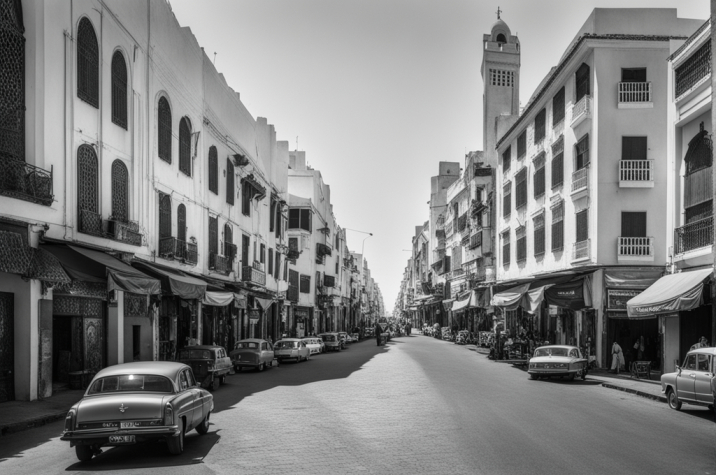
Casablanca, the chief port and largest city in Morocco, is a bustling metropolis located on the western coast. Its strategic location has made it a hub for trade and commerce, attracting businesses from all over the world. The city’s rich history has shaped its development, with significant events like riots and bombardment during World War II leaving their mark.
Demographic Dynamics
Casablanca boasts a diverse population, with a vibrant mix of Arab, Berber, and European heritage. This cultural melting pot adds to the city’s unique charm and creates an atmosphere of inclusivity. The city also has a young population with a growing middle class, contributing to its dynamic energy and economic growth. Casablanca experiences an influx of rural migrants who seek better economic opportunities in this thriving urban center.
Academic Anchors
The educational landscape of Casablanca is anchored by prestigious universities and research institutions. Casablanca University stands out as one of the leading educational institutions in Morocco, offering a wide range of academic programs across various disciplines. The presence of these esteemed educational establishments plays a vital role in shaping the intellectual fabric of the city.
Religious Landmarks
One cannot talk about Casablanca without mentioning its iconic religious landmarks. The crown jewel among them is undoubtedly the Hassan II Mosque – one of the world’s largest mosques – which stands as an architectural marvel against the backdrop of the Atlantic Ocean. Its intricate design and grandeur attract visitors from around the globe.
In addition to mosques, Casablanca is home to synagogues, churches, and other religious sites that reflect the city’s religious diversity. This multicultural tapestry showcases how spirituality holds significant importance in the lives of its residents.
From its historic past to its vibrant present-day scene, Casablanca captivates visitors with its unique blend of cultures, architectural wonders, and religious landmarks. The city’s central area, known as “Dar el Beida,” is a treasure trove of iconic landmarks like the Hassan II Mosque and the Casa Port train station.
Casablanca’s allure lies not only in its physical beauty but also in its people. The diverse community that calls this city home contributes to its vibrant atmosphere and welcoming nature.
Cultural Mosaic of Casablanca
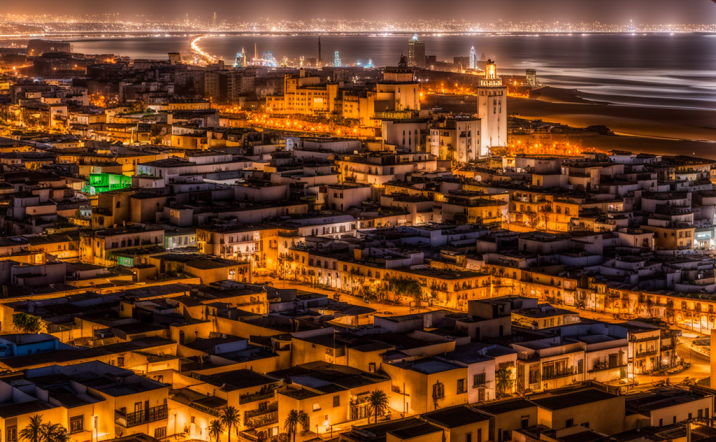
Casablanca, the largest city in Morocco and a vital port is located on the beautiful Atlantic coast. With its diverse population, the city is renowned for its cultural mosaic that reflects the rich history and influences of various communities. Throughout its existence, Casablanca has witnessed significant historical events, including riots and bombardment during World War II. Taxis are a common mode of transportation within the city and to other areas.
Artistic Expressions
The artistic expressions in Casablanca serve as a vibrant reflection of its dynamic community and events. Artists from different backgrounds use their work to convey powerful messages about the world around them. Through their art, they create a point of connection between people from various walks of life.
Music and Literature
Casablanca boasts a rich musical heritage deeply rooted in traditional Moroccan music genres such as Chaabi and Andalusian music. Renowned Moroccan artists like Abdelwahab Doukkali and Najat Aatabou have drawn inspiration from this diverse musical landscape.
In addition to music, Casablanca has also made significant contributions to literature. Authors like Driss Chraibi and Tahar Ben Jelloun have captivated readers with their literary works, showcasing the intellectual prowess of the city’s residents.
Theater and Visual Arts
The theater scene in Casablanca is thriving, offering a platform for both traditional Moroccan performances and contemporary plays. Audiences can enjoy an array of theatrical productions that celebrate local culture while embracing modern storytelling techniques.
Moreover, Casablanca hosts several art galleries that exhibit works by local artists alongside international exhibitions. This fusion creates an environment where artistic expression flourishes through various mediums within the city.
Cinematic and Architectural Splendor
Casablanca gained global recognition through the release of the iconic film “Casablanca” in 1942. This cinematic masterpiece showcased the city’s allure and left an indelible mark on popular culture.
Architecturally, Casablanca is a sight to behold. The city boasts stunning Art Deco buildings influenced by French colonial style, adding to its unique charm.
Navigating Casablanca’s Transit Systems
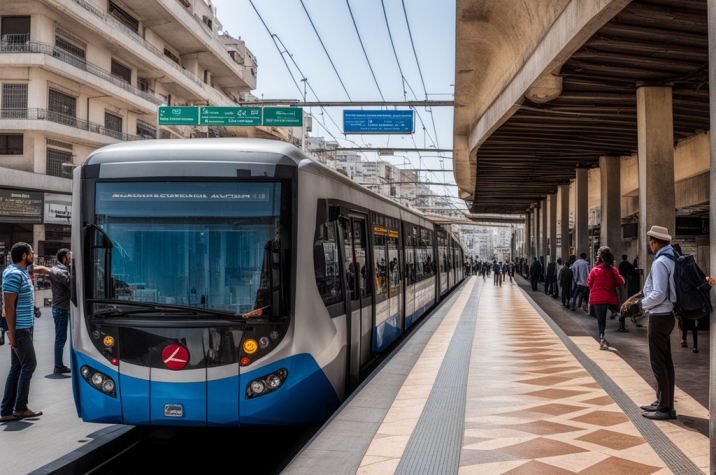
Casablanca, a bustling city in Morocco, is well-connected by various transit systems that cater to the needs of its residents and visitors. These systems include grand taxis, taxis, and a railway network. Casablanca boasts an international airport and serves as a chief port on the coast. Let’s explore how you can navigate these transit options to get around the city efficiently.
Rapid and Air Transit
To facilitate convenient commuting within Casablanca, the city has implemented an efficient tramway system that connects different parts of the city. The tramway provides a reliable mode of transportation for both locals and tourists alike. Alongside the tramway, bus networks offer extensive coverage across Casablanca, ensuring that public transportation needs are met effectively.
The implementation of these rapid transit systems not only enhances connectivity but also promotes sustainable mobility by reducing traffic congestion. Commuters can rely on these modes of transport to navigate through the busy streets of Casablanca with ease.
Road Networks and Railways
Casablanca benefits from well-developed road infrastructure that connects it to other major cities in Morocco. This comprehensive road network ensures smooth travel between destinations within the country. Whether you’re planning a trip to Tangier, Rabat, or Marrakech from Casablanca, you can rely on these roads for seamless journeys.
In addition to road networks, Casablanca also has a modern railway system that offers high-speed train services connecting major cities like Tangier, Rabat, and Marrakech. These trains provide convenient options for domestic and international travel for both residents and tourists visiting Morocco.
The railway network not only facilitates intercity travel but also contributes to economic growth by fostering trade between different regions in Morocco. It enables businesses to transport goods efficiently while offering passengers comfortable and reliable locomotive services.
During World War II, Casablanca’s strategic location as a major port made it susceptible to bombardment. Despite the challenges faced during that time, the city has since rebuilt and expanded its transit systems to meet the growing demands of its population.
Casablanca’s Global Allure

Casablanca, known for its iconic movie of the same name, holds a special place in the hearts of many. Its global allure is not just limited to its cinematic history; it stems from being a major international airport hub and its strategic location on the Atlantic coast. This vibrant city has become an important center for trade and travel, attracting people from all over the world.
One of the reasons behind Casablanca’s global appeal is its well-connected network of transportation options. With this efficient transportation system in place, Casablanca becomes easily accessible to people coming from various parts of the world.
Beyond its convenient transit systems, Casablanca boasts a diverse community and a cosmopolitan atmosphere that adds to its charm. The city serves as a melting pot of cultures where different traditions blend harmoniously. From traditional Moroccan architecture to modern skyscrapers, Casablanca showcases a unique fusion of old and new.
There are several must-visit places that capture the essence of this vibrant city. Ain Diab Corniche is one such destination that offers beautiful beaches, restaurants serving delicious local cuisine, and a lively nightlife scene. Visitors can soak up the sun during the day and enjoy vibrant entertainment options after dark.
For those seeking an authentic Moroccan experience, exploring the Old Medina is highly recommended. This historic district showcases traditional architecture with narrow winding streets lined with bustling markets selling everything from spices to handicrafts. Immerse yourself in Moroccan culture by sipping mint tea at a local café or bargaining for unique souvenirs.
No visit to Casablanca would be complete without marveling at the architectural wonder that is the Hassan II Mosque. This stunning mosque, located on the coast, boasts intricate details and offers panoramic views of the ocean. It is a symbol of Morocco’s rich cultural heritage and religious significance.
This Moroccan gem is also known for its notable personalities who have left their mark on the city and beyond.
Casablanca in the Global Lexicon
Casablanca, a word that has become synonymous with the city itself, represents its international reputation and significance. The bustling city of Casablanca is known for its vibrant culture, economic prowess, and diverse community.
Multilingual Interpretations
Arabic serves as the official language of Casablanca, reflecting Morocco’s cultural heritage. However, French has also gained prominence as a widely spoken second language due to historical ties between Morocco and France. This linguistic diversity creates an inclusive environment where locals and visitors can communicate effectively.
Moreover, English has emerged as a commonly understood language in Casablanca. With its importance in the business and tourism sectors, many Moroccans have learned English to cater to the needs of international travelers. This multilingual landscape showcases the cosmopolitan nature of the city.
Pop Culture References
Casablanca’s global recognition extends beyond its geographical boundaries through various pop culture references. The classic film “Casablanca” immortalized the city’s name worldwide, capturing its allure and romantic ambiance on screen. The movie’s iconic quotes like “Here’s looking at you, kid” have become ingrained in popular culture.
Furthermore, music has played a significant role in referencing Casablanca. Songs like “Marrakesh Express” by Crosby, Stills & Nash mention Moroccan destinations including Casablanca, adding to its cultural significance on a global scale. Artists from different genres have been inspired by the city’s charm and incorporated it into their creative works.
Books, artworks, and literature have also captured the essence of Casablanca through different mediums. Writers and artists have depicted the vibrant streetscapes, intricate architecture, and unique blend of cultures that define this Moroccan gem. These artistic expressions further contribute to Casablanca’s place in popular culture.
Conclusion
In conclusion, the exploration of Casablanca’s history, geography, economy, culture, and global significance has provided a comprehensive understanding of this vibrant city. From its origins as a small Berber settlement to its transformation into a bustling economic hub, Casablanca has emerged as a symbol of Morocco’s modernity and progress. Its rich cultural heritage, diverse population, and strategic location have contributed to its global allure and recognition.
As we delve deeper into the intricacies of Casablanca, we uncover the layers of its identity and the impact it has had on the world stage. From its portrayal in the iconic film to its influence on literature and popular culture, Casablanca continues to captivate our imagination. Whether you are planning a visit or simply seeking knowledge about this fascinating city, exploring Casablanca’s history and significance will undoubtedly leave you with a greater appreciation for its unique place in the global lexicon.
FAQs
Casablanca refers to a city in Morocco, as well as a famous film released in 1942. The term “Casablanca” literally translates to “white house” in Spanish. However, the film has come to symbolize romance and intrigue set against the backdrop of World War II.
The movie Casablanca was directed by Michael Curtiz, a Hungarian-American filmmaker. Released in 1942, it stars Humphrey Bogart and Ingrid Bergman and has since become an iconic piece of cinematic history.
Set during World War II, Casablanca tells the story of Rick Blaine, played by Humphrey Bogart, who runs a nightclub in the Moroccan city of Casablanca. When his former lover Ilsa Lund, portrayed by Ingrid Bergman, walks back into his life with her husband Victor Laszlo, Rick must make difficult choices that test his love and loyalty.
Casablanca is considered a classic film due to its timeless storytelling, memorable characters, and powerful performances. Its themes of love, sacrifice, and redemption resonate with audiences even today. The movie also features iconic lines such as “Here’s looking at you kid” and an unforgettable soundtrack that further contributes to its enduring popularity.
Casablanca’s impact on popular culture is vast. It introduced phrases like “Play it again, Sam” into everyday language while also influencing subsequent films with its blend of romance and wartime drama. The movie’s setting and characters have been referenced or parodied in various forms of media over the years, solidifying its status as an influential cultural touchstone.

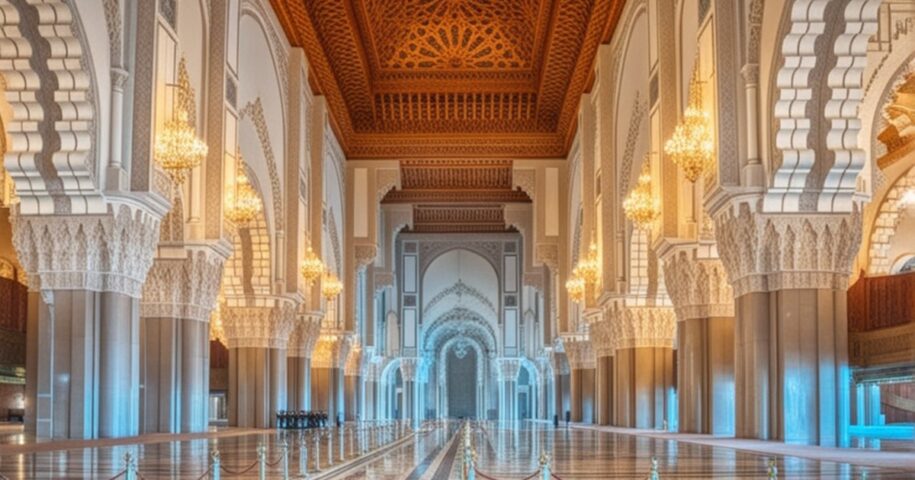
Leave a Reply